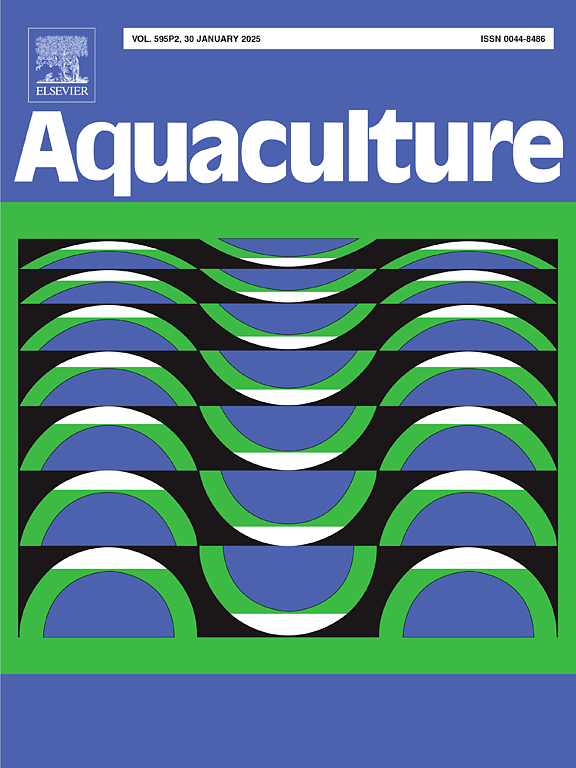A TaqMan probe-based RT-qPCR for the detection of brine shrimp reovirus 1
IF 3.9
1区 农林科学
Q1 FISHERIES
引用次数: 0
Abstract
Brine shrimp (Artemia) are widely utilized as a vital live feed in the aquaculture industry. Recently, we found a novel reovirus - brine shrimp reovirus 1 (BSR1) in brine shrimp. Considering the potential impact of reovirus on the industry, it is necessary to develop a highly sensitive and specific detection method in advance for identifying BSR1. In this study, we established a real-time quantitative reverse transcription PCR (RT-qPCR) method based on TaqMan probe. The detection limit of this method is as low as 4.4 × 101 copies/reaction. The standard curve between 4.4 × 101 to 4.4 × 109 copies/reaction showed a high correlation coefficient (R2 = 0.997). This newly developed method was used to screen for BSR1 in brine shrimp cyst samples from Africa, Asia, Europe, Oceania, South America and North America, and the results showed that BSR1 was detected in samples from Asia and North America. The brine shrimp cyst samples tested covered seven different species, with BSR1-positive samples found in A. franciscana, A. urmiana, A. sinica, and parthenogenetic Artemia lineage. The diagnostic sensitivity (DSe) and diagnostic specificity (DSp) values of the newly developed RT-qPCR method, when compared to the high-throughput sequencing, were determined to be 100 % and 88 %. This newly developed RT-qPCR method can serve as a crucial tool for detecting BSR1, facilitating early warning and swift response to viruses carried by brine shrimp, thereby effectively mitigating the risk of pathogen transmission to cultured animals.
求助全文
约1分钟内获得全文
求助全文
来源期刊

Aquaculture
农林科学-海洋与淡水生物学
CiteScore
8.60
自引率
17.80%
发文量
1246
审稿时长
56 days
期刊介绍:
Aquaculture is an international journal for the exploration, improvement and management of all freshwater and marine food resources. It publishes novel and innovative research of world-wide interest on farming of aquatic organisms, which includes finfish, mollusks, crustaceans and aquatic plants for human consumption. Research on ornamentals is not a focus of the Journal. Aquaculture only publishes papers with a clear relevance to improving aquaculture practices or a potential application.
 求助内容:
求助内容: 应助结果提醒方式:
应助结果提醒方式:


